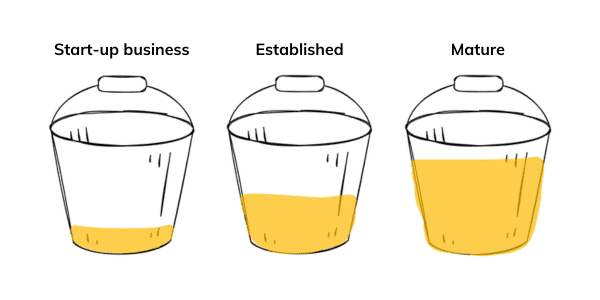Menu
Are there tons of actions on your to do list, and you don’t know where to start? Or are you overwhelmed by how much you need to do and don’t have time? Feeling frustrated or disheartened with your marketing?
What if I said there was an easy way to re-focus your small business marketing tactics to grow your revenue as a priority? If this is music to your ears, then read on.
Stripping marketing back to its most basic growth drivers can help you prioritise your effort, time and money to the activities with the biggest impact. This is critical for a small business owner like you and me. You are most likely short on time and have a small budget that must stretch a long way. Am I right?
For now, ignore all the various marketing channels you can use. Don’t worry about email, or social media, print advertising, or your website blog. These are your channels – how you get your marketing out into the world. Too often, I seen small business owners start with the channel, and that doesn’t prioritise your growth. It prioritises a task. And that is how you get caught up in the “doing” rather than focusing on what has the most value. So, let’s take a step back and look at what drives growth.
Your marketing can be divided into three categories that go into a bucket. Your goal, each year, is to grow your revenue – the size of your bucket.

First, your existing customers are already in the bucket. Your marketing goal here is to build relationships with them so they purchase again (and again), and tell their friends!
The second is acquisition. This is how you get new customers and add them into your bucket.
Lastly, there is a small hole in the bottom of your bucket. These are the customers you lose. They purchase and don’t come back, or after some time leave. This is called attrition. Your marketing here is designed to make that hole as small as possible with marketing activities designed to retain your customers over the long term.
Acquisition, repeat business and loyalty, and customer retention are all important. So how do you decide where to spend most of your time and energy? It depends on what stage your business is at. Let’s consider some examples:

So, you can see that the stage your business is at and how much of the market your business has captured will influence where you focus your efforts. It’s not to say that a new business shouldn’t focus on growing customer loyalty, but its core priority is to focus on new customer growth.
Now it’s over to you. Where would you prioritise your marketing efforts based on your business stage and share of your market? Once you have worked that out, it become easier to decide what you need to do to grow the size of your bucket. This is a great way to be more focused and intentional in your efforts. You will also see where you need to tweak your resources to the most impactful places. And just like that, no more wasted time on the wrong things!
Grab my free Small Business Marketing Tactics for Growth Guide and work out your marketing priorities now.

© 2024 Marketing On Demand. All Rights Reserved. Marketing on Demand is a trading name and registered Trademark of Unlimited Talent Ltd | Privacy Policy | Terms and Conditions
By using this website you accept our privacy policy and website terms and conditions